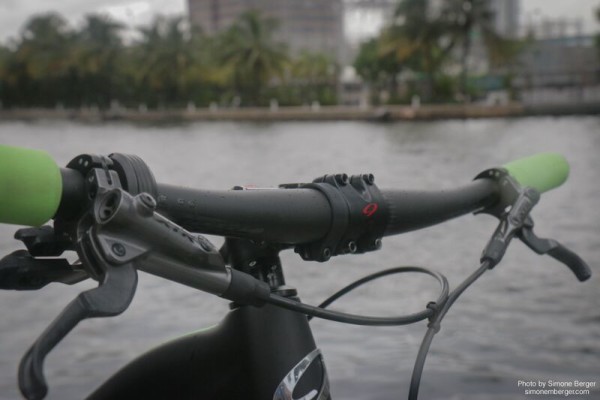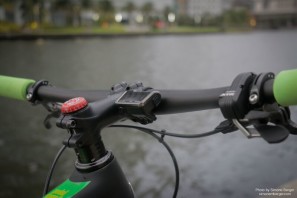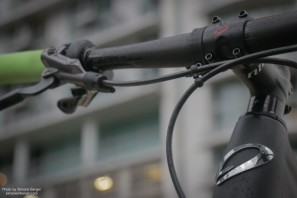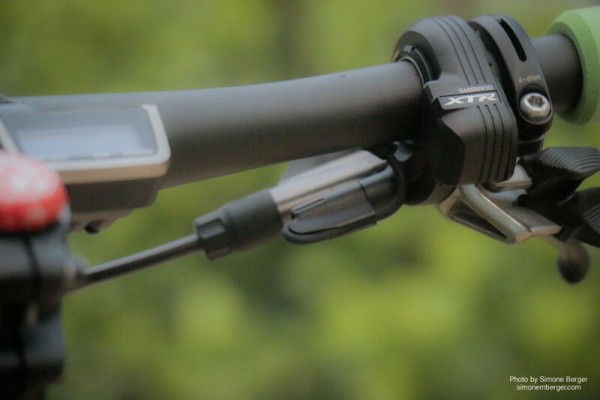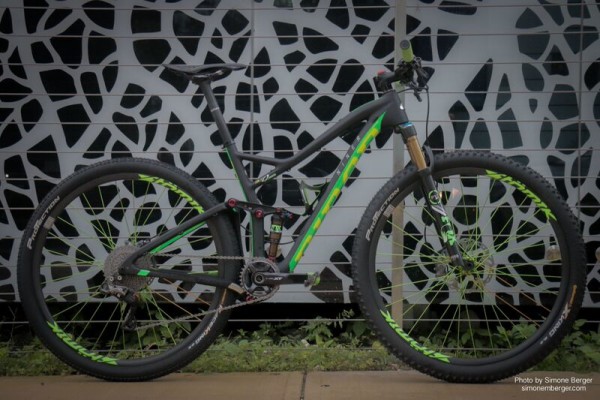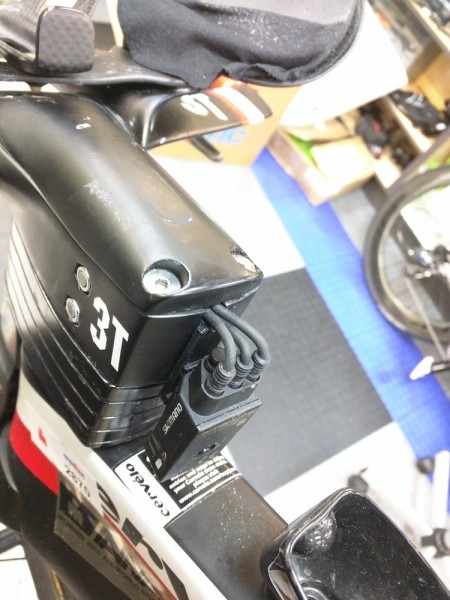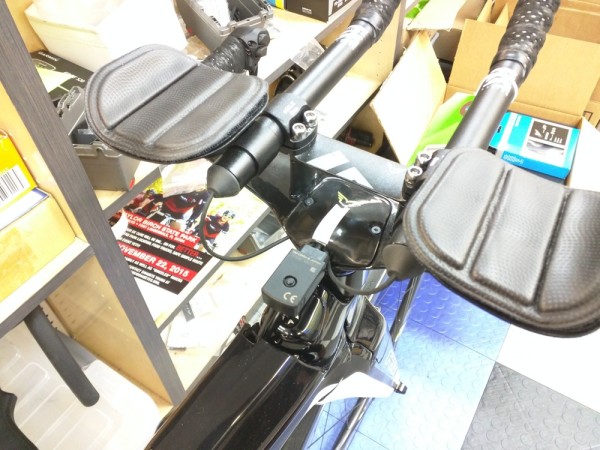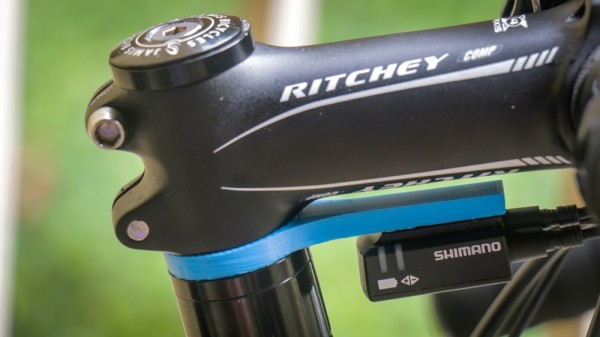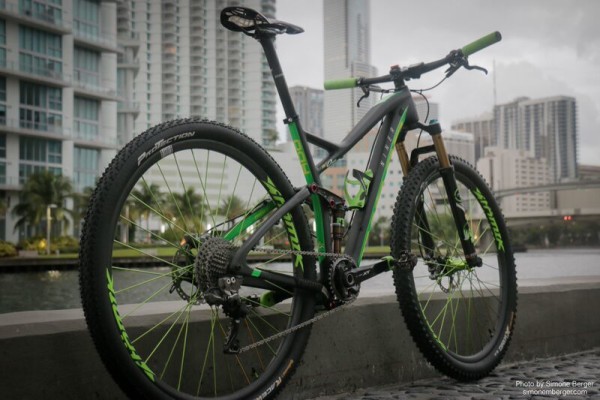
Never satisfied with the Di2 status quo, Julian DaSilva is back with a new creation that takes Di2 integration to the next level. Ok, he never really left, but he has found himself at the Racer’s Edge in Boca Raton, FL. As a high end, boutique shop that caters to racers, Julian’s skills with Di2 systems as well as his new SOS NRS 3D printed Di2 junction box mounts should be a hit…
Unlike SRAM Red eTap, Di2 still uses wires which in most cases can be internally routed through the frame. But who wants a bunch of wires cluttering up the handlebar? While a few bars and stems offer off the shelf solutions for wire management, Julian wanted to create a custom set up with carbon bars from Atomik. The result is a super clean, minimalist bar set up. According to Julian, one of the trickiest parts of the set up was routing the wire while still using a standard stem and starnut. Wiring goes from the bar, to the stem, to the steerer, to the rest of the frame.
Just about the only wire visible at the bar is this small bit before it tucks into the carbon just in front of the shifter. Otherwise, the rest of the set up is fairly straight forward with the battery stashed in the seatpost.
Not wanting to go “crazy on lightweight parts” the Niner RKT 9 DRO comes in at a very respectable 23.5 lbs (10.66kg) – though Julian mentions team bikes have gotten down to as low as 20 lbs. In addition to the Shimano XTR Di2 1x drivetrain,t he build includes Atomik carbon rims with Industry Nine hubs and spokes, an XT crank, Niner stem and post, and Continental tires.
On the other side of the Di2 equation, Julian has started to 3D print and sell his own Di2 junction box mounts for road and tri bikes. Sold under the name SOS NRS, mounts are available for under stem which acts as a spacer on the steerer tube, or custom mounts for the Cervelo P5, Felt IA, or Quintana Roo PR6. Each mount sells for $24.99 and is available in a few colors.
